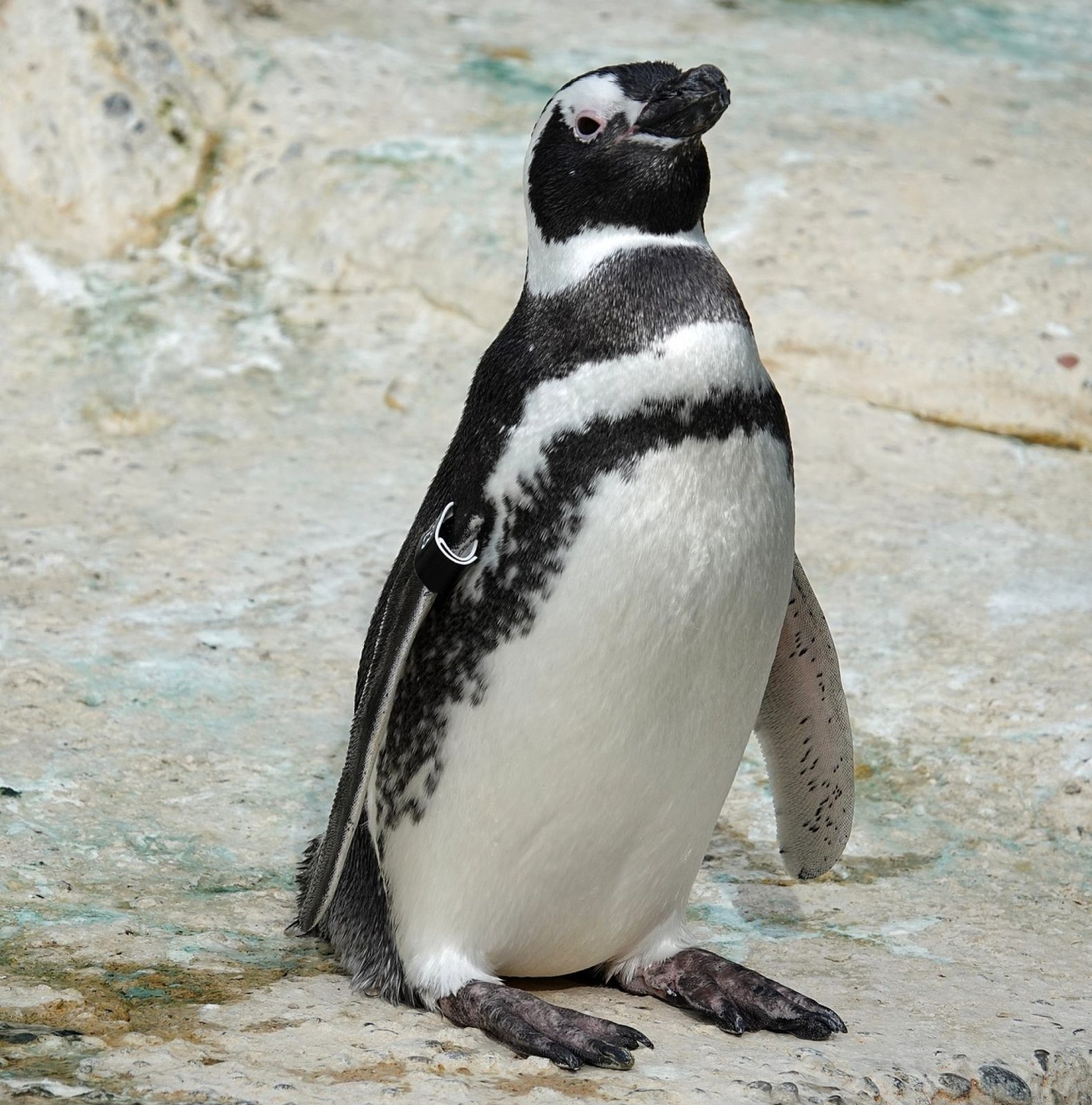
Magallenic Penguin
 The Magellanic penguin is a South American penguin, breeding in coastal Patagonia, including Argentina, Chile, and the Falkland Islands, with some migrating to Brazil and Uruguay, where they are occasionally seen as far north as Espirito Santo. Vagrants have been recorded far from their home range, including in El Salvador, the Avian Island in Antarctica, Australia, and New Zealand.
The Magellanic penguin is a South American penguin, breeding in coastal Patagonia, including Argentina, Chile, and the Falkland Islands, with some migrating to Brazil and Uruguay, where they are occasionally seen as far north as Espirito Santo. Vagrants have been recorded far from their home range, including in El Salvador, the Avian Island in Antarctica, Australia, and New Zealand.
Its closest relatives are the Humboldt, African and Falklands islands, but it is the most numerous of the three. It is named after a Portuguese explorer, Ferdinand Magellan who spotted it in 1520.
Its current listing is least concern, but the population is decreasing. However, with a current population estimated at 1.5 million breeding pairs, they are one of the more numerous. The Falkland island population has fallen by 10% in recent years, and the clear cause has not been fully accepted.
In the wild, these penguins generally live 25 years, and captive members can live to 30.
Magellanic penguins feed in the water, on small pelagic fish, hagfish, cuttlefish, squid, krill, and other crustaceans, and ingest sea water with their food. Their salt-excreting gland rids the salt from their bodies. Adult penguins can regularly dive to depths of between 20 m to 50 m deep in order to forage for prey. During the breeding period, male and female diets are extremely similar, as they are forced to hunt in the same waters, however, bone analysis has showed that these diet split when they can go their own ways.
Unlike Galapagos penguins, there is little problem finding plenty of food while raising young. It was found, that they enjoy eating jellyfish, and will actively seek them out. They keep mating with the same partner, year after year. The male arrives first, and reclaims their burrow from the last year. The females recognize their mate from call alone. When the breeding season is over, they head further north to waters off the coast of Peru and Brazil.
Threats include oil spills, changes in prey availability and climate change. Their predators include sea lions, giant petrels and leopard seals. The Warrah, or Falkland islands wolf, predated this species prior to its extinction, which occurred in 1876 – it was the first Canid to go extinct in the modern time. Their biggest threat is the Puma, who, where the range overlaps take enough for penguins to form a sizable part of their diet, Another threat, is tourists visiting the breeding grounds, as this stresses them, which causes chemicals in their blood, which are bad for the species long term health. Tourism does indeed still help save them long-term, but time must be taken to assess whether any specific tourist unit are looking out for the health of the species you are paying to see. As always, using either research run visits, or those operated by conservationists, should help make sure that your visit is not bad for this species. Well run tourism, can generally have little or no impact on the health of the animal. Researchers have found that each year 20,000-22,000 penguins die off the coast of Argentina as a result of oil spills, often unreported. Climate change has moved the fish, such that in many places the penguins have to go a further 25 miles each way in order to find food. Also, the changes to the weather are meaning that rainstorms arrive before the chicks have grown feathers that will keep them warm.
The province of Chubit in Argentina is keen to create a marine reserve to protect this species, and its largest breeding colony, suggesting that it is not all bad news.
As always, we are looking for people who work in tourism of this species, and are eager to list your details. Please look at the top of the home page for “list your wild place” or click here to list your opportunity.
Below is a short video on this species, and below that is a list of any articles that have been written on this subject (we are eager to accept stories from outside, get in touch).
Below both of these, we will list any opportunities to see this species. Careful eco-tourism can help both locals and the long-term survival of this species.